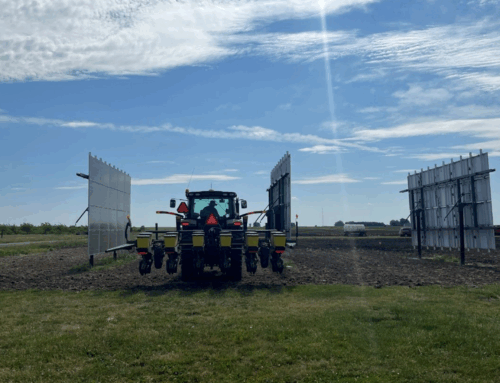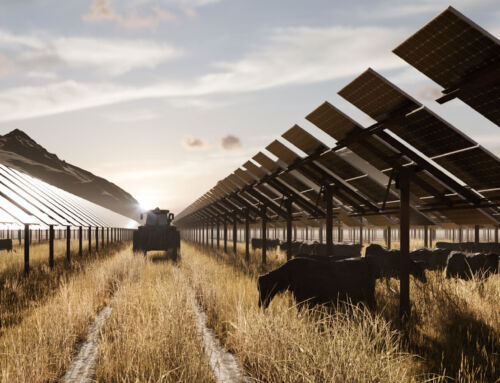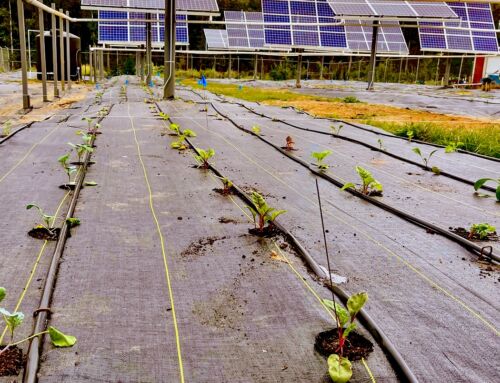Agrivoltaics is an exciting and innovative combination of agriculture and solar energy generation. It’s a prime example of dual-use solar, which improves the sustainable use of land through the addition of solar racking that doesn’t interfere with the purpose or functionality of the space.
While agrivoltaics is becoming more widely explored as a high-return solution for maximizing land productivity and boosting energy independence, there are still a lot of questions to be answered on how it works, what benefits it can deliver, and where it’s best used.
In this article, we’ll explore some of the most frequently asked questions on agrivoltaics, including how it works as a concept and in practice, and how top-of-pole mounts fit into this interesting solar application.
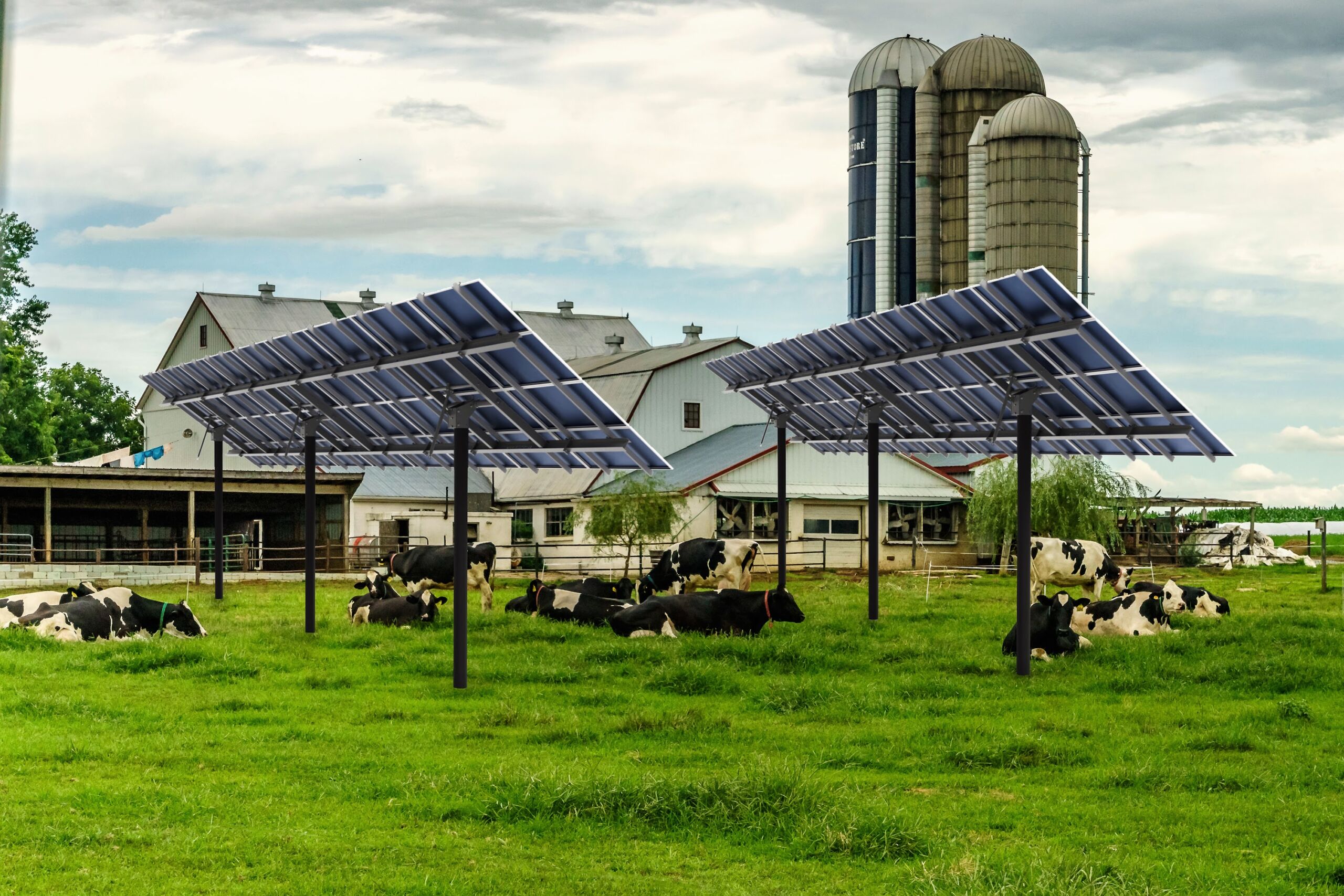
1. What is agrivoltaics?
Agrivoltaics is the combination of agriculture and photovoltaic energy generation. It is also referred to as agrisolar or dual-use solar, although dual-use solar doesn’t have to be exclusive to agriculture. Solar carports and canopies can also be considered dual-use solar. Agrivoltaics can use various solar racking systems, including roof-based solar mounted to greenhouses and barns and ground-based solar mounts that raise arrays above crops and livestock spaces.
2. How does agrivoltaics work?
Agrivoltaics works by generating solar energy on land that’s dedicated to agriculture. In an ideal agrivoltaics setup, solar racking is integrated in a way that does not interfere with land productivity or maintenance, including planting, grazing, harvesting, etc.
Depending on the type of solar racking and agriculture, agrivoltaic mounts can enhance growing conditions by offsetting extreme temperatures and improving soil moisture retention, which can reduce erosion and irrigation demands. Agrivoltaic solar mounts can also provide shade for free-range livestock, which, is sometimes referred to as solar grazing.
Beyond benefits for plants and animals, agrivoltaics can also improve solar energy generation, as crops provide evaporative cooling that boosts PV module efficiency and grazing animals keep wild plants from reaching heights that interfere with solar arrays.
3. Where can agrivoltaics be used?
Agrivoltaics can be used to establish new solar farms and research projects, but they can also be integrated into existing farmland, pastures, vineyards, orchards, and other spaces. When implemented using ground-based systems like top-of-pole solar mounts, there’s no need to leverage existing structures for roof-based racking.
Agrivoltaics can be used with industrial-scale agriculture production to introduce substantial power-generating capacity. It can also be scaled to offset energy costs on smaller family farms, community gardens, allotments, and urban growing spaces.
4. Why are top-of-pole mounts better for agrivoltaics?
Top-of-pole mounts work especially well for agrivoltaics and ground clearance is a major reason why. Unlike lower-clearance solar racking, pole mounts can be designed at heights that allow for unencumbered activity around and directly below the mount. Farm equipment can be operated, animals can freely graze, and other agricultural tasks can be carried out without affecting the solar array. Higher ground clearance allows for better air circulation, more space for crops, and easier access for maintenance.
Top-of-pole mounts provide benefits for preserving land. They can be secured with a concrete foundation that’s only minimally and temporarily disruptive to the soil. Alternatively, driven pile foundations can support top-of-pole mounts.
Adjustability is another significant advantage. Instead of keeping PV modules at a fixed angle, pole-mounted solar arrays can be tilted to maximize output for the season, and as needed to provide additional clearance for farming activities and easy module cleaning.
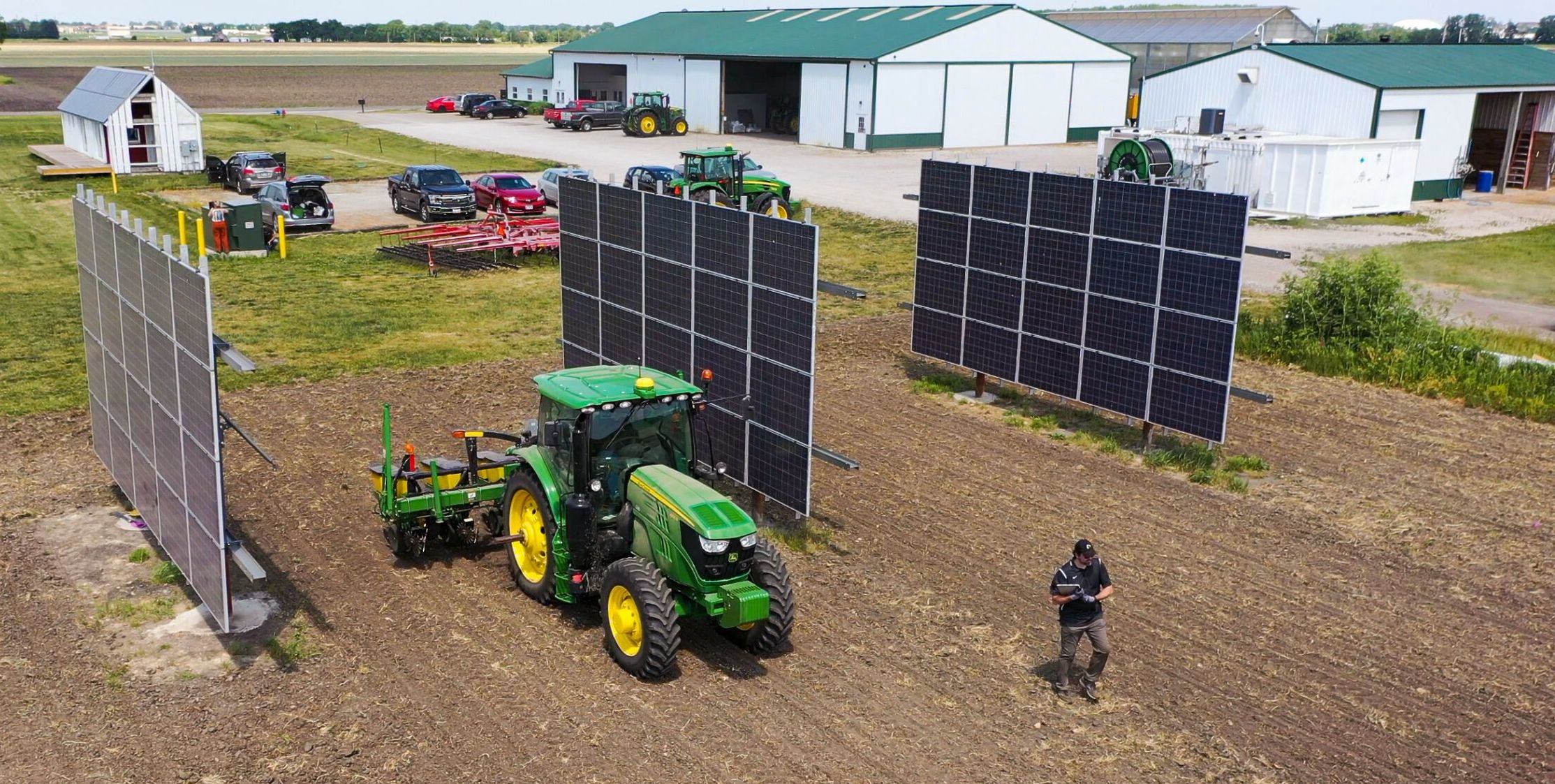
5. Is agrivoltaics expensive?
Creating an agrivoltaics setup can be a significant financial investment. The upfront cost of solar ground mounts is usually higher than roof-based racking installed on a home, barn, or other structure. However, higher output through a larger array and adjustable tilt angle can deliver a greater return on investment. It’s also possible to start with a smaller solar mount on one portion of the property and add more after gaining the financial benefits.
6. Is agrivoltaics worth the cost?
Generating power and maximizing the earning potential from a land investment easily justifies the cost of agrivoltaics for large and small agriculture properties. Adding solar mounts to farms makes them productive regardless of the growing season and when harvests fall short of expected yields. Agrivoltaics mounts provide more consistent cost offsetting, even as agriculture profits fluctuate.
7. What is the best module or array configuration for agrivoltaics?
The best module or array configuration for an agrivoltaics setup depends on the agricultural and land manageability requirements. Minimal ground clearance, power output goals, and local environmental considerations, like peak wind and snow loads, are major factors. Crop and livestock types, and equipment that will be used around or below the mount, will also have an impact on the ideal module arrangement.
Depending on property attributes, groupings of single-pole mounts with smaller arrays can be more adaptable than multi-pole mounts with more expansive arrays. It could also improve energy output, as preliminary research has shown that additional spacing between PV modules contributes to lower temperatures and better efficiency.
8. What crops are best for agrivoltaics?
Agrivoltaics have been successfully used with a variety of crops, including leaf and root vegetables, berries, peppers, tomatoes, barley, soybeans, and vine and orchard-based crops. Researchers are still exploring the effects of solar racking and modules on crop yields and energy production in a range of different scenarios.
Some studies have found that agrivoltaics can increase plant health and productivity if module shading is used to make local growing conditions more ideal for a specific type of crop. For example, the challenges of growing shade-loving lettuce in hotter, drier climates can be offset with solar mounts, which increases crop yields. Conversely, solar mounts paired with tomatoes or peppers in cooler, wetter climates may not contribute to higher crop yields.
9. Are solar mounts safe for crops and animals?
Solar mounts are safe for crops and animals when ground clearance is high enough. Higher ground clearance allows the land below the mount to be maintained without chemicals or harsh weed control methods. Arrays can also be raised to heights that ensure animals cannot reach the modules, wiring, or frame. The only portions of a top-of-pole solar mount that can be easily accessed from the ground are the foundation, which can be made from ordinary concrete or pile-driven, and the steel pole, neither of which pose any safety hazards to crops or livestock.
10. What’s stopping agrivoltaics from becoming more popular?
Two of the biggest factors curbing agrivoltaics are the upfront costs and commonly held misconceptions about solar mount management and its impacts on land use, crop health and productivity, soil quality, and other agricultural priorities.
Incorporating solar mounts into farmland does require an initial investment. While this can be justifiable through power generation, it’s not always within reach, especially for smaller, privately owned, and family-run farms. Planning for an incremental agrivoltaics setup by starting with just one or a few solar mounts, then scaling up as solar energy production delivers financial benefits, can make agrivoltaics more affordable.
Any unfavorable impacts on crop health, productivity, soil quality, etc. can be avoided by selecting the right solar racking system. Agrivoltaics mounts installed with a low-profile or pile-driven foundation will be only minimally and temporarily disruptive to existing fields while maximizing the amount of growing and grazing space. Mounts with higher ground clearance allow for easy and natural maintenance of the ground below. This means that crops and livestock will not be adversely affected and the solar array and its energy-generating potential will not be impacted. Solar mounts that are robust enough to withstand climate extremes, contact with large livestock, and any accidental collisions with farming equipment will alleviate many concerns about mount upkeep and longevity.

